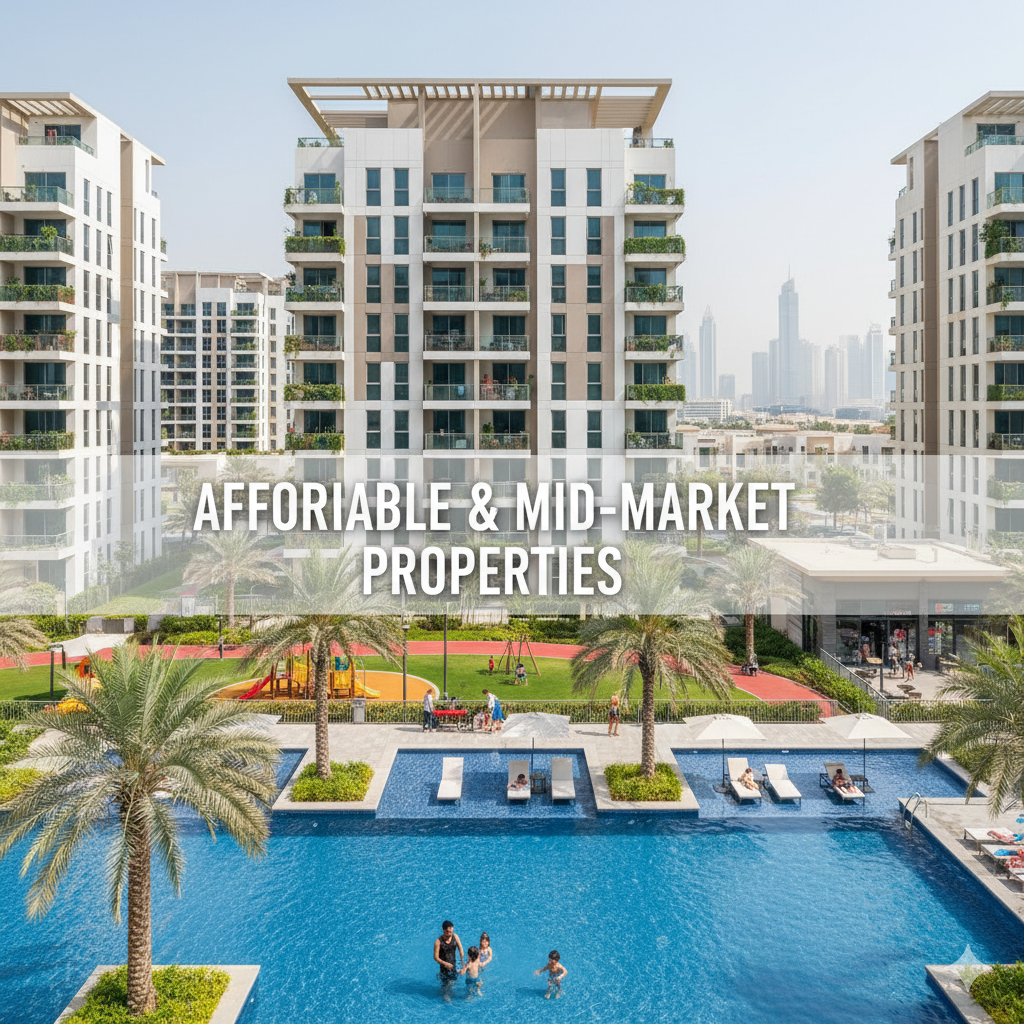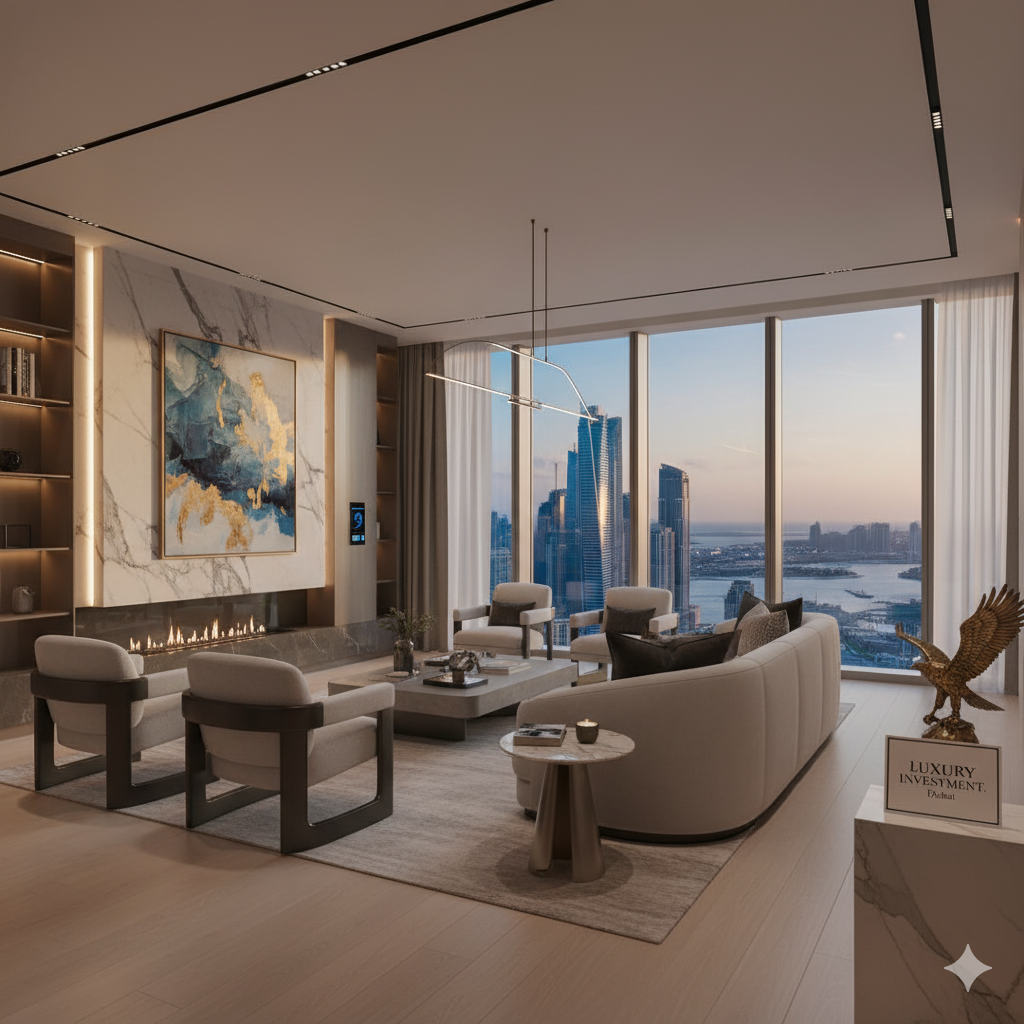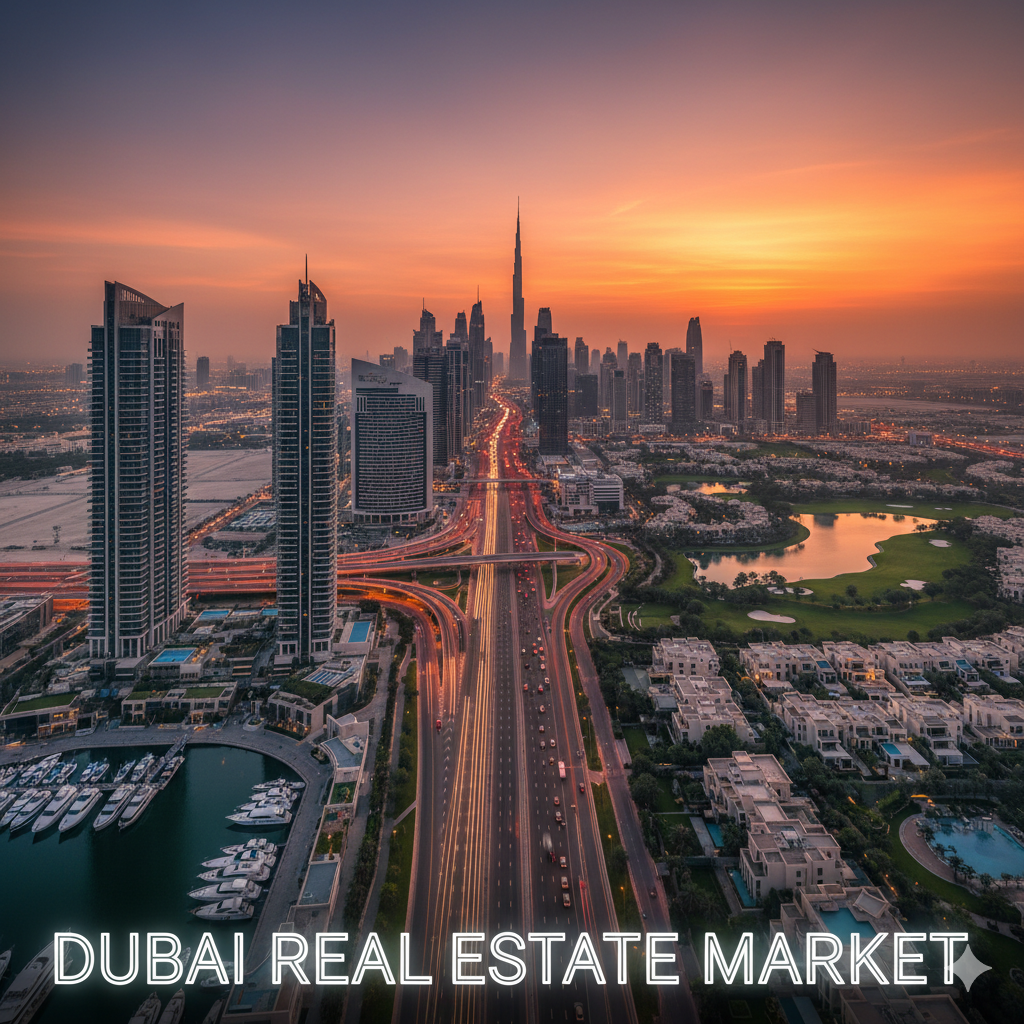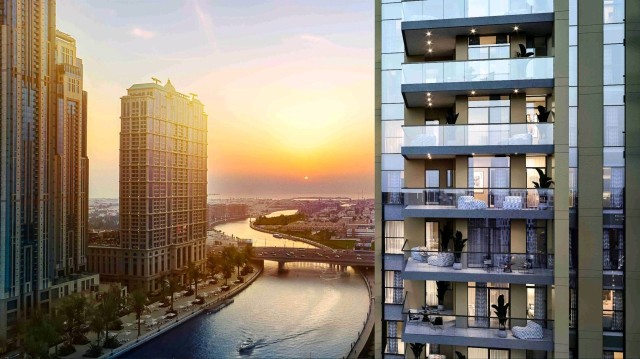The landscape of the Dubai Real Estate Market is one of perpetual motion, a dynamic ecosystem that continually draws global attention. As we move through the forecast for 2025, the market presents a compelling, yet complex, choice for discerning investors: the allure of ultra-luxury properties promising significant capital appreciation versus the dependable cash flow of affordable, high-yield homes.
This in-depth advisory delves into the anticipated trends of the Dubai Real Estate Market for the year ahead, providing an evidence-based framework for making a sound investment decision. Our objective is to equip you, the investor, with the expertise and trustworthy insights necessary to navigate this exciting market with confidence.

1. The 2025 Macroeconomic Foundation of the Dubai Real Estate Market
Before addressing the property segments, it is crucial to understand the sturdy foundations upon which the Dubai Real Estate Market stands in 2025. This isn’t a speculative boom; it is a period of calculated, sustainable growth driven by strategic governmental foresight and global capital flow.
Key Economic Drivers:
- Population Growth & Urban Master Plan: Dubai’s ambitious 2040 Urban Master Plan aims to significantly increase the residential population, creating sustained, organic demand across all property types. This influx is fueled by attractive long-term residency schemes like the Golden Visa.
- Economic Resilience and Diversification: The UAE’s non-oil GDP growth, coupled with its status as a leading global business and financial hub, provides a robust economic cushion against global volatility. This stability reinforces investor confidence in the Dubai Real Estate Market.
- Favorable Regulatory Environment: Investor-friendly policies, including zero tax on rental income and capital gains, combined with a highly transparent regulatory framework (RERA), make Dubai an exceptionally attractive global investment jurisdiction.
- Infrastructure Momentum: Ongoing and planned mega-projects, including the expansion of the Metro line and new waterfront developments, are not only improving quality of life but are strategically increasing property values in newly connected and emerging areas.
The overarching forecast for the Dubai Real Estate Market in 2025 indicates a phase of moderate yet robust price appreciation—projected in the range of 5% to 8% for prime segments, and slightly lower, but still solid, growth in mid-market segments.
2. Investment Focus A: The Allure of Luxury Properties
The luxury segment of the Dubai Real Estate Market—encompassing ultra-prime villas, branded residences, and high-end penthouses—continues to be a major draw for global High-Net-Worth Individuals (HNWIs).
Characteristics of Luxury Investment:
| Attribute | Detail | Key Locations |
| Primary Goal | Capital Appreciation and Wealth Preservation. | Palm Jumeirah, Emirates Hills, Dubai Hills Estate, Jumeirah Bay Island, Downtown Dubai. |
| Anticipated ROI | Strong Capital Growth (5-8% annual appreciation forecast) and moderate rental yields (typically 3.5% – 6.0%). | |
| Key Demand Driver | Relocation of global wealth, safe-haven status, desire for exclusive lifestyle amenities, and limited stock of high-end villas. | |
| Risk Profile | Lower liquidity (higher transaction value), but greater resilience to market-wide downturns due to limited supply and unique buyer pool. |
Strategic Insight: Playing the Long Game
Investing in Dubai luxury real estate is a strategic move for long-term capital preservation and significant growth. The price of an ultra-prime villa is driven by scarcity—especially in master-planned, low-density communities like Dubai Hills Estate or private islands.
Editorial Advice: For the seasoned investor seeking a stable store of value that hedges against global instability, focusing on off-plan luxury projects from Tier-1 developers is advisable. These offer lower entry points and the highest potential for capital appreciation upon handover, provided the location is genuinely prime and the developer has an impeccable delivery record. The ultimate return on investment (ROI) in this segment is realized upon a premium resale, not necessarily through rental income.

3. Investment Focus B: The Strength of Affordable and Mid-Market Properties
The affordable and mid-market segment is the backbone of the transactional volume in the Dubai Real Estate Market. This sector caters to the growing population of working professionals, young families, and mid-level executives who form the city’s economic engine.
Characteristics of Affordable Investment:
| Attribute | Detail | Key Locations |
| Primary Goal | High Rental Yield (Cash Flow) and Portfolio Diversification. | Jumeirah Village Circle (JVC), Dubai South, Dubai Investment Park (DIP), Liwan, Business Bay (mid-range units). |
| Anticipated ROI | Superior Rental Yields (typically 6.5% – 8.5% net), with steady, moderate capital appreciation. | |
| Key Demand Driver | Sustained population increase, high demand for affordable rentals from the expatriate workforce, and relative affordability compared to established prime areas. | |
| Risk Profile | Higher liquidity (easier to enter and exit), but potentially more sensitive to short-term fluctuations in rental demand or new supply. |
Strategic Insight: Optimizing for Cash Flow
Affordable properties are the quintessential choice for investors prioritizing passive income and immediate cash flow. Rental yields in well-managed, high-demand affordable communities frequently surpass those of luxury locations, sometimes reaching up to 8% or more.
Editorial Advice: Look for properties in emerging areas with crucial future infrastructure connections, such as proximity to the extended Metro lines or major new employment hubs (like Dubai South/Al Maktoum International Airport district). The sweet spot is a high-quality, mid-sized apartment (1-2 bedrooms) in a reputable community with full amenities. The strategy here is to acquire a ready or near-ready unit, secure a tenant swiftly, and begin generating a consistent rental return. This approach offers a compelling ROI and a shorter investment payback period compared to the luxury segment. The stability of the Dubai Real Estate Market ensures that demand for quality mid-market rental units remains consistently high.
4. The Dubai Real Estate Market 2025: A Comparative Risk-Return Analysis
The decision between luxury and affordable property is essentially a decision between Growth vs. Income.
| Investment Metric | Luxury Properties (Capital Growth Focus) | Affordable/Mid-Market Properties (Income Focus) |
| Entry Price | High (AED 5M+) | Moderate (AED 700K – 2M) |
| Primary Risk | Higher initial capital expenditure, lower annual cash yield. | Potential oversupply in certain micro-markets, lower capital appreciation rate. |
| Primary Return | High potential for Capital Appreciation (realized at sale). | High, consistent Rental Yield (immediate cash flow). |
| Target Investor | Ultra-HNWIs, Institutional Funds, Long-term Wealth Preservationists. | Income-focused investors, portfolio diversifiers, first-time international buyers. |
| Liquidity | Moderate-to-Lower (fewer buyers at the top-end). | High (large pool of buyers and renters). |
The Expert Conclusion on Strategy: Diversification
The truly sophisticated strategy in the Dubai Real Estate Market for 2025 involves an element of diversification across both segments.
- Allocate 60-70% of your portfolio to high-yield, affordable/mid-market properties in strong rental areas (e.g., JVC, Business Bay). This secures your passive income stream and operational liquidity.
- Allocate 30-40% of your portfolio to a select luxury asset, ideally an off-plan villa or branded residence in a prime location with a strong capital appreciation trajectory. This is your engine for long-term wealth growth.
This balanced approach leverages the best of both worlds within the robust framework of the Dubai Real Estate Market.
5. Navigating Key Market Trends in the Dubai Real Estate Market 2025
Beyond the luxury vs. affordable debate, several overarching trends will define the success of any investment in the Dubai Real Estate Market this year.
Trend 1: The Off-Plan Dominance Continues
Off-plan properties are projected to maintain their significant share of total transactions. Developers are responding to buyer demand with innovative payment plans that allow investors to benefit from price appreciation before the final handover. For investors, off-plan is a strategic tool to lock in today’s price for tomorrow’s asset. Due diligence on the developer’s track record and the project’s escrow account (Oqood) is absolutely non-negotiable for trustworthiness.
Trend 2: The Green & Smart Premium
Sustainability and technology are no longer niche features; they are becoming standard expectations. Properties integrating ‘Smart Home’ technology and achieving high green building certifications (e.g., LEED or Al Sa’fat) command a measurable premium in both sale price and rental rate. This aligns with the UAE’s Net Zero 2050 strategy and is a key driver for long-term property value in the Dubai Real Estate Market.
Trend 3: Short-Term Rentals for Enhanced Yield
The booming tourism sector ensures the demand for short-term rentals (holiday homes) remains exceptionally high. Properties in areas like Dubai Marina, Downtown Dubai, and Palm Jumeirah can generate significantly higher gross rental yields (sometimes 10%-12% or more) through short-term lettings, provided they are professionally managed and fully compliant with DTCM (Department of Tourism and Commerce Marketing) regulations. This strategy is an excellent way to boost the ROI on mid-to-high-end apartments.

6. The Right Expertise in Your Investment Journey
The Dubai Real Estate Market is sophisticated, which means relying on verified data and local expertise is paramount to mitigating risk and maximizing returns.
The Investor’s Due Diligence Checklist:
- Verify Title and Ownership: Always conduct searches through the Dubai Land Department (DLD) to confirm the legal status of the property and the developer’s registration.
- Analyze Localized Data: General market forecasts are useful, but drilling down into sub-market specifics (e.g., JVC’s expected new supply versus Palm Jumeirah’s finite stock) is where the true investment edge lies.
- Engage Certified Professionals: Your success hinges on the guidance of RERA-certified agents and reputable legal counsel specializing in UAE property law. Avoid advice from unverified sources. The stability and transparency of the Dubai Real Estate Market are best leveraged with professional assistance.
- Understand Total Costs: Factor in all associated expenses: DLD fees (4%), registration fees, service charges, maintenance costs, and potential property management fees to calculate an accurate net ROI.
The Dubai Real Estate Market in 2025 is poised for continued growth, driven by a powerful combination of economic stability, progressive policy, and global appeal. Whether you choose the path of luxury appreciation or affordable, high-yield income, a well-researched, diversified, and professionally guided strategy is your best roadmap to success. The opportunity for lucrative returns has rarely been more pronounced. Invest wisely, and the Dubai Real Estate Market will reward your diligence.
Moses Oyong is a luxury real estate advisor with a passion for arts and culture, music, fashion, and all things luxurious. With a keen eye for beauty and attention to detail. I strive to help my clients find their dream homes that reflect their unique sense of style and taste whilst providing them with the right information to ease the stress of the decision-making process.




